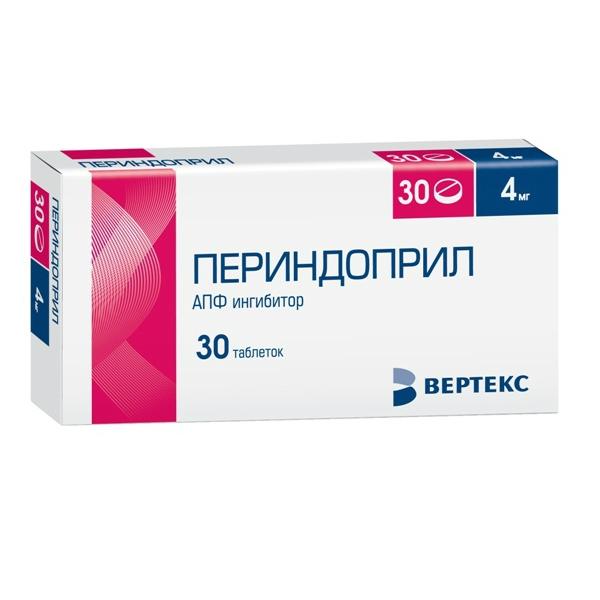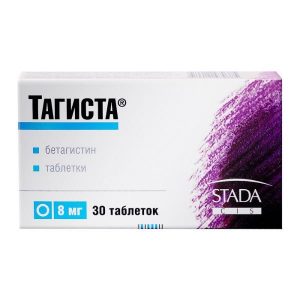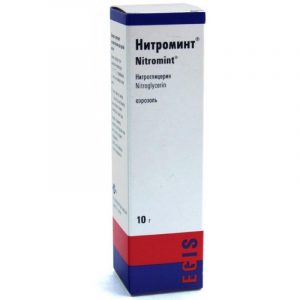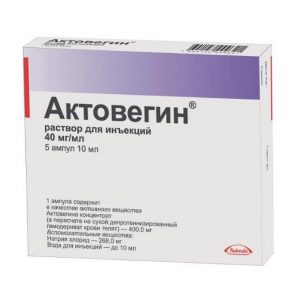Description
Latin name
PERINDOPRIL
Release form
Tablets are white or almost white, flat cylindrical, with a bevel.
Packing
30 pcs
Pharmacological action of
Perindopril is an ACE inhibitor. It is a prodrug from which the active metabolite perindoprilat is formed in the body. It is believed that the mechanism of antihypertensive action is associated with competitive inhibition of ACE activity, which leads to a decrease in the rate of conversion of angiotensin I to angiotensin II, which is a powerful vasoconstrictor.
As a result of a decrease in the concentration of angiotensin II, a secondary increase in plasma renin activity occurs due to the elimination of negative feedback during renin release and a direct decrease in aldosterone secretion.
Due to its vasodilating effect, it reduces OPSS (afterload), jamming pressure in the pulmonary capillaries (preload) and resistance in the pulmonary vessels increases cardiac output and exercise tolerance.
The antihypertensive effect develops during the first hour after taking perindopril, reaches a maximum at 4-8 hours and lasts for 24 hours.
Pharmacokinetics
After oral administration, perindopril is rapidly absorbed from the gastrointestinal tract. Cmax is reached after 1 h. Bioavailability is 65-70%.
In the process of metabolism, perindopril is biotransformed with the formation of an active metabolite – perindoprilat (about 20%) and 5 inactive compounds. Cmax of perindoprilat in plasma is reached between 3 and 5 hours after administration. The binding of perindoprilat to plasma proteins is insignificant (less than 30%) and depends on the concentration of the active substance. Vd of free perindoprilat is close to 0.2 l / kg.
Does not cumulate. Repeated administration does not lead to cumulation and T1 / 2 corresponds to the period of its activity.
When taken with food, perindopril metabolism slows down.
T1 / 2 of perindopril is 1 hour.
Perindoprilat is excreted by the kidneys of T1 / 2 of its free fraction is 3-5 hours.
In elderly patients, as well as in renal and heart failure, perindoprilat excretion is slowed down.
Indications
Arterial hypertension, XPonic heart failure.
Contraindications
History of angioedema, pregnancy, lactation, childhood, hypersensitivity to perindopril.
Special instructions
Use with caution in case of renal failure and severe hypertension.
Before starting treatment with perindopril, a study of renal function is recommended for all patients.
During treatment with perindopril, renal function, liver enzyme activity in the blood should be regularly monitored, peripheral blood tests should be performed (especially in patients with diffuse connective tissue diseases, in patients who receive immunosuppressive drugs, allopurinol). Before starting treatment, patients with sodium and fluid deficiency should be corrected for water-electrolyte disturbances.
During treatment with perindopril, hemodialysis using polyacrylonitrile membranes should not be carried out (the risk of anaphylactic reactions is increased).
Perindopril should be used with caution simultaneously with drugs that can cause an increase in the level of potassium in the blood (indomethacin, cyclosporine). Concomitant use with potassium-sparing diuretics and potassium preparations is not recommended.
Ingredients srdlkrpirndm 4 mg:
Excipients:
lactose (milk sugar),
microcrystalline cellulose,
croscarmellose sodium (primellose),
magnesium stearate.
Dosage and administration
Initial dose – 1-2 mg per day in 1 dose. Maintenance doses – 2-4 mg per day for congestive heart failure, 4 mg (less often – 8 mg) for arterial hypertension in 1 dose.
In case of impaired renal function, a correction of the dosage regimen is required depending on the QC values.
Side effects
From the respiratory system: dry cough is possible.
From the digestive system: dyspeptic symptoms, dry mouth, taste disturbances.
From the side of the central nervous system: headache, sleep and / or mood disturbances, dizziness in some cases – convulsions.
From the hemopoietic system: lowering hemoglobin levels (especially at the beginning of treatment) rarely – a decrease in the number of red blood cells and / or platelets.
From the side of the kidneys: reversible increase in creatinine and uric acid levels.
Allergic reactions: angioedema, skin rash, itching, erythema.
Other: sexual disorders.
Drug Interactions
When used concurrently with antihypertensive agents, muscle relaxants, means for anesthesia may increase the antihypertensive effect.
With simultaneous use with loop diuretics, thiazide diuretics, an increase in antihypertensive effect is possible. Severe arterial hypotension, especially after taking the first dose of a diuretic, appears to be due to hypovolemia, which leads to a transient increase in the hypotensive effect of perindopril. Increased risk of impaired renal function.
With simultaneous use with sympathomimetics, the antihypertensive effect of perindopril may be reduced.
When used simultaneously with tricyclic antidepressants, antipsychotics (antipsychotics), the risk of developing postural hypotension increases.
With simultaneous use with indomethacin, the antihypertensive effect of perindopril is reduced, apparently due to inhibition of the synthesis of prostaglandins under the influence of NSAIDs (which are believed to play a role in the development of the hypotensive effect of ACE inhibitors).
When used simultaneously with insulin, hypoglycemic agents, sulfonylureas, hypoglycemia may develop due to increased glucose tolerance.
When used simultaneously with potassium-sparing diuretics (including spironolactone, triamteren, amiloride), potassium preparations, salt substitutes and dietary supplements for food containing potassium, hyperkalemia may develop (especially in patients with impaired renal function), because . ACE inhibitors reduce the content of aldosterone, which leads to a delay in potassium in the body against the background of limiting the excretion of potassium or its additional intake.
With simultaneous use with lithium carbonate, a decrease in the excretion of lithium from the body is possible.
overdose
Symptoms:
blood pressure lowering, shock, stupor, bradycardia, electrolyte abnormalities, kidney failure.
Treatment:
gastric lavage, use of enterosorbents, restoration of water-electrolyte equilibrium, intravenous administration of 0.9% sodium chloride solution. In case of marked decrease in blood pressure, the patient should be given a horizontal position with his legs raised. Hemodialysis effective (do not use high-permeability polyacrylonitrile membranes). In the development of bradycardia-atropine. In severe cases, a temporary implantation of the heart rhythm driver is shown. It is necessary to control and correct the vital functions of the body.
Storage Conditions
Store in a dry, out of reach of children place protected from light at a temperature not exceeding 25 ° C.
Shelf life
2 years.
Deystvuyushtee substance
Perindopril
Conditions of release from drugstores
Prescription
dosage form
tablets
Possible product names
PERINDOPRIL 0.004 N30 TABLE
Perindopril 4 mg Tab. X20 (R)
Perindopril 4mg Tab. X30 (R)
Perindopril tab 4mg N30 (pack N10x3)
Perindopril tab 4mg N30 pack
Vertex, Russia




